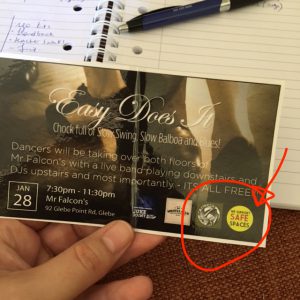..
..
….impossible. No one seems to live here. Hello? Hello, Czech people?
Nope. The city is empty.
Category Archives: travel
Seoul fashion report:
Shoulder bags and hand bags are de rigeur in this crowded city, and we still see plenty of neutral hues and conservative shades. Printed calico totes are (finally) on their way out, but Seoulsiders specialise in the well-designed fabric carry bag. These soft, practical accessories are perfect with the relaxed silhouette of this warm season.
Seoul Fashion Report:
The younger set are living in their very short shorts, particularly cut off denim in white, blue, and black. But for a softer, dressier warm-evening look, they’re topping them with knee length open shirts in flowing floral cotton. A simple white sleeveless undershirt and sandals complete the look. We aren’t convinced this style will stay, but it’s perfect for summer.
Seoul fashion report:
The simple shift dress in linen or cotton is perfect for summer in Seoul. Matched with sandals of all descriptions, but most pleasingly those with a thicker soul and interesting straps. Features: asymmetrical buttons or a ruffled hem. We still see plenty of raglan sleeves and drop shoulders, and the silhouette is chicly androgynous.
Seoul fashion report:
Seoul is a hot wet mess today, and no one’s staying dry. And after that heat, the rain is a real pleasure! Raincoats are unbearable, so umbrellas are kept to hand. Shoes? Sandals! The Teva comes into its own, and there isn’t a stocking in sight.
Seoul fashion report:
Gentlemen are still saying yes to the horizontal stripe on a tshirt, but make it wide. The wider the better, and in navy or black. Pair it with tidy shorts in black, and finish with sturdy sandals. Teva are very now, but the latest season Doc sandal is very acceptable.
Seoul fashion report:
when the humidity’s high, and the temperature is _hot_, Seoul bares skin. Gentlemen sport sporty shorts, and ladies let their legs breathe in skirts.
Our favourite trend is the calf-length trouser. Only just arriving in Australia, this uncomfortable-in-winter style has stuck around for summer in Seoul. We approve!
Sydney is winning, you know
Check out this simple little symbol on this event flyer.
It says ‘we support safe spaces’, and it’s slipped in there next to the venue, organising body logos. This placement says ‘this is as important as who runs this event’ and ‘we are proud of this’.
It’s not the perfect little symbol, and I’d probably say ‘this is a safe space’, but it WORKS.
Just like flying a rainbow flag or having a rainbow sticker in your window, just like the pink triangle, this little symbol says “We are onto this.”
I’ll be attending EASY DOES IT…. tonight. (well, I probably would anyway, because live band, two floors dancing in a squashy bar: my favourites.
I do have a question, though: this is a public event, and the venue is a bar. How will the venue be enforcing safe space policies? Legit question, and out of curiousity, as we work closely with the PBC, and rely on their own commitment to equity and safety.
Now I’m all excited about community partnerships in working for safety and equity at dance events. I’d be curious to see how Nevermore Jazz Ball and Jenny Shirar and Christian Frommelt approach these things in their very-community-focussed event.
seoul fashion report (mature lady edition):
The ajumma invented power clashing, both in fashion and in bargain hunting, but she understands context. Florals in earth tones or pastels for casual daywear, matched with sensible flats for shopping. But when she goes off-road with her peers, the aunty bumps her colours up into the hi-vis, saturated range. Fabrics are water-resistant, pockets are zippered, and pouches are many.
Truly, this is an aesthetic for the age.
Seoul fashion report:
Silhouettes are longer, with straight lines and hanging knits and jackets without a waistline. Hemlines are mid-calf on the fashion-forward, in both skirts and trousers. Unless you are 17, then the very short skirt is chic.
Last season’s uncles have once again heralded this season’s trend: large plaids.
Accessories:
Shoulder bags and slim-line backpacks are always de rigeur for Seoul’s crowded subway, and there are quite a few soft berets and brimmed hats on the street.
If you enjoyed the late 80s and early 90s, you’ll enjoy Seoul in autumn 2016.


